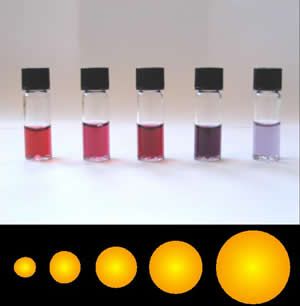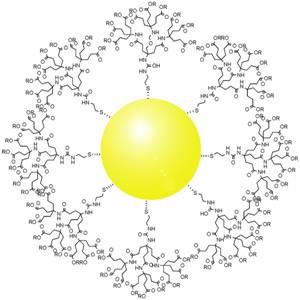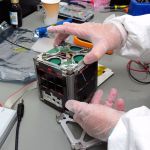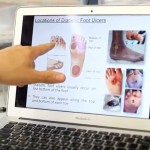“… it winds through the entire land of Havilah, where there is gold. The gold of that land is good; aromatic resin and onyx are also there.” (Genesis 2:11–12)
A research team from Bar-Ilan University in Ramat Gan is exploring how gold nanorods can help diagnose and treat thickened artery walls.
The gold rod-shaped nanoparticles are absorbed by macrophages, white blood cells that are abundant in plaque buildup, essentially “lighting up” problems areas during molecular imaging. When used in conjunction with cancer-seeking antibodies, gold nanoparticles show promise in targeting tumors.
In an interview with Times of Israel, research lead Professor Dror Fixler said there is a difference in safety between treating arterial blockage with gold nanoparticles and traditional methods.
“Tests offered today include ultrasound, CT scans and MRI, but these are costly, not readily available and include ionizing (and thus damaging) radiation. Our test method is non-ionizing,” Fixler told journalist Itamar Sharon.
“A method called contrast imaging was developed over the past decade. In this method, a kind of secret agent is injected into the body. This agent sticks to the place where you’re looking for growths and can be used to get the picture you want. Those secret agents are the nanoparticles,” Fixler said. (Haaretz)
In previous research, Fixler and his team found that the “rod shape changed the length of the wave that the particles reflected and enabled the particles to penetrate more deeply into the tissue.”
“Once the particles penetrate the tissue, we do not look at the reflection,” Fixler added. “Instead, we look at their effect on light diffusion within the tissue. Finally, the light that is reflected from the tissue is a calculable mathematical function that is based on the amount of photons coming from the tissue, depending on the distance from the point where the light entered.”

Solutions that contain gold nanoparticles of various sizes. The size difference causes the difference in colors. (Photo by Aleksander Kondinski)
The researchers are also looking at a possible treatment method where gold particles would be linked with good cholesterol to then target the fatty obstructions in the blood vessels.
Fixler’s study will be presented at the biannual NanoIsrael conference and exhibition to be held in Tel Aviv on February 22–23, 2016. The exhibition is titled “Nano-Theranostics with Plasmonic Nanoparticles: God Exists in the Small Details.”
Fixler conducted his research as a member of the Nano Photonics Center at Bar-Ilan’s Institute for Nanotechnology and Advanced Materials. The Institute houses 40 laboratories as well as other facilities that enable research into nanofabrication, electron microscopy, surface analysis, fluorescence and magnetic measurement.
In late 2014, Fixler and a team of researchers looked into another use for gold nanoparticles — whether gargling them could help detect cancer of the tongue, mouth, throat and vocal cords. The method worked effectively in trials at the Department of Otolaryngology at Sheba Medical Center in Tel HaShomer.
“It’s not considered a scientific or medical gold standard yet because we compare the results that we receive with the results of the patient’s biopsy, but we’ve had a success rate of more than 90 percent,” Fixler told Haaretz in August 2014.
According to his university profile, Fixler was educated at Bar-Ilan and is an expert in “electro-optics and photonics research including the emission, transmission, detection and sensing of light for biomedical properties. His primary foci are developing new technologies for super resolution microscopy, medical testing, and communications networks.”








